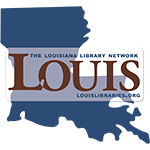Human Anatomy and Physiology I
Topic outline
-
Welcome to CBIO 2213 - Human Anatomy & Physiology I!
Course Introduction
This course has been designed to identify anatomical structures of the human body and to explain the interconnection of how bodily processes operate. Anatomy and Physiology describe the physical structures of the human body and the functionality of each structure as both components work together. Students will develop an adequate understanding of the structure and function of each bodily system within the human organism, diseases and professions dealing with each body system, and the principles of human anatomy and physiology. This course will cover the following topics and body systems: body structure, homeostasis, atoms and molecules, biochemistry, cell structure and function, the chemistry of water, cell biology, tissues, the integumentary system, the skeletal system, joints, biomechanics, muscle anatomy, muscle physiology, the nervous system, and sensory systems.
Upon completion of this course, students will be able to:- Identify the appropriate terminology to effectively communicate information related to anatomy and physiology.
- Recognize the anatomical structures and explain the physiological functions of body systems.
- Explain the importance of homeostasis and the interrelationships between organ systems.
- Apply knowledge of anatomical structure and physiological function to real-world situations.
Structure of the Course
This course is organized in 14 modules. Each module contains its own learning objectives that are mapped to the overarching course learning objectives. The modules are composed of learning resources such as readings, activities, and assessments that are designed to optimize student learning according to the course learning objectives.
In addition to assigned reading, textbook chapters contain review questions in the “Test Your Knowledge” sections and interactive activities in the “Practice” sections. The discussion activities facilitate learning through student engagement with each other and the quizzes help students review and test the knowledge they’ve gained from the module. Select modules contain case studies that provide real-life examples to enhance positive student outcomes. Modules with case studies have shorter quizzes to maintain a balanced workload and scoring across the modules.
Navigating the CourseThis course is set up in modules covering various topics which may be accessed from the course navigation menu that is located to the left of the screen. If not visible, click the
 icon located at the upper left corner of the screen. Every section and module heading can be scrolled through but the contents may be initially collapsed to minimize scrolling. Just toggle the > icon to expand the item. Each module includes the relevant readings and activities. Many items are required and may be marked as completed automatically when the activity has been submitted (the broken check box), but others will marked as done by the student (the solid check box).Please move through the items below and continue through the Learner Support and Getting Started modules before moving on to Module 1. Be sure to check for announcements and due dates to stay on track.
icon located at the upper left corner of the screen. Every section and module heading can be scrolled through but the contents may be initially collapsed to minimize scrolling. Just toggle the > icon to expand the item. Each module includes the relevant readings and activities. Many items are required and may be marked as completed automatically when the activity has been submitted (the broken check box), but others will marked as done by the student (the solid check box).Please move through the items below and continue through the Learner Support and Getting Started modules before moving on to Module 1. Be sure to check for announcements and due dates to stay on track.
 This course and its contents, developed by Jonathan Akin, Scott Crousillac, Sharon Lagarde, Ayda Basgul Martin, and Priscilla Stewart, are licensed under a Creative Commons Attribution 4.0 International License by LOUIS: The Louisiana Library Network, except where otherwise noted.
This course and its contents, developed by Jonathan Akin, Scott Crousillac, Sharon Lagarde, Ayda Basgul Martin, and Priscilla Stewart, are licensed under a Creative Commons Attribution 4.0 International License by LOUIS: The Louisiana Library Network, except where otherwise noted. -
This module contains all the items you should review and complete before you begin Module 1. Before moving on, be sure to:
- Check the News and Announcements Forum
- Read the Course Syllabus
- Introduce yourself to the class
- Read the instructions for the Q & A Forum
Good luck in the course!-
Use this forum to tell us a little about yourself and your interests. Some topic ideas:
- What is your field of study/research interest or concentration?
- What are you most interested in learning about in this class and why?
- Have you ever taken an online class before?
- Any other information you would like to share with your classmates, such as special interests or activities.
Post a picture! We look forward to meeting you.
-
Use this forum to ask your instructor any questions you have about the course. You may post at any time, and your instructor will respond here. Be as specific as possible.
Please keep in mind that others can see your posts, so do not post any personal information. If you have questions about your grade, please email your instructor directly. You can expect a response to posts and emails within [X] hours. [Recommendation is 24 hours M-F, next business day on weekends.]
Subscription should be set to Auto.
- Check the News and Announcements Forum
-
Use the information in this module to customize the template to your needs. This module is currently hidden from students, and available for you to refer to throughout the semester.
-
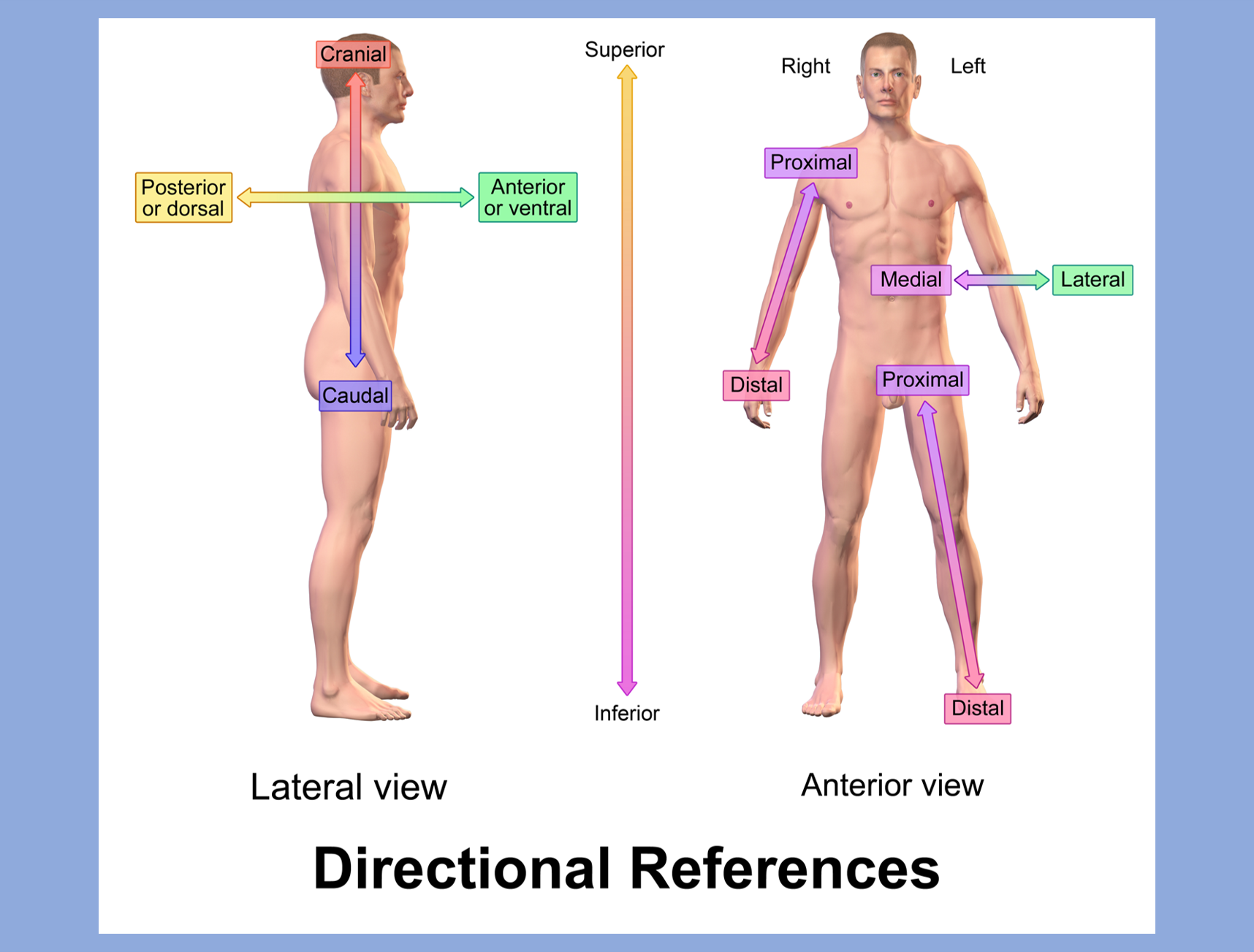
This module will introduce terms for body direction, anatomical planes, regions, and quadrants, and basic information on all body systems and their functions. Anatomists and healthcare providers use this universal terminology for precision and to reduce medical errors. Using precise anatomical terms eliminates ambiguity and creates a unifying language scientists and medical professionals use internationally. These terms and information in this unit will be used in many other units. Learning these medical terms will assist in building the foundation needed for the language used in any medical career.
Homeostasis is essential since this is the body’s way of maintaining internal and external balance. The failure of homeostatic regulation in just one body system will cause conditions to deteriorate and may be fatal. For the health of an organism, all homeostatic regulation mechanisms must function correctly.
Upon completion of this module, you will be able to:- Define the terms organ, organ system, and organism. anatomical position, directional terms, sagittal, frontal, transverse planes, midsagittal, and parasagittal. (CLO #1)
- Name the eleven organ systems of the human body, identify the major organs, and give each system a major function.(CLO #1, #2, and #3)
- Describe how the abdominopelvic region is divided into either nine regions or four quadrants. (CLO #1)
- Explain the importance of homeostasis to physiology and specify three conditions that are maintained by homeostatic processes. (CLO #1 and #3)
- Define a feedback loop. Explain what is meant by negative and positive feedback systems and describe their role in homeostasis. (CLO #1 and #3)
To achieve these objectives:
- Review the syllabus and introduce yourself in the "Introduce Yourself!" forum.
- Read the Module 1 Introduction. (MLO #1-5)(CLO # 1 and 3)
- Read Chapters 1 and 2 from the Human Anatomy & Physiology I textbook. (MLO #1-5)(CLO #1-3)
- Test Your Knowledge sections are located at the end of each segment in both chapters. Answering the questions in these sections will aid in your knowledge to help you with the course. These questions will be relevant for information on testing and quizzes. (MLO1-5)(CLO#1-3
- Complete the exercises in the "Practice" sections at the end of each chapter.( (MLO 1-5)CLO #1-3)
- Complete the discussion activity. (MLO #4)(CLO #1-4)
- Complete the case study exercise. (MLO#4)(CLO #1-4)
- Complete the quiz. (MLO # 1-5) (CLO #1 and 3)
Note the check boxes to the right that help you track your progress: some are automatic, and some are manual.
Module Pressbooks Resources and Activities
You will find the following resources and activities in this module at the Pressbooks website. Click on the links below to access or complete each item.
-
In this quiz, course learning outcomes #s 1, and 3 and module learning outcomes #s 1, and 5.
This quiz will have 5 questions. It is worth 10 points. You are allowed two attempts at this quiz. Correct answers will be available for review after the quiz is closed.
Directions for Instructors: Load questions from the Module 1 Question Bank. Set close date and then tick "Right answer" box under "After the quiz is closed" section of Review Options.
-
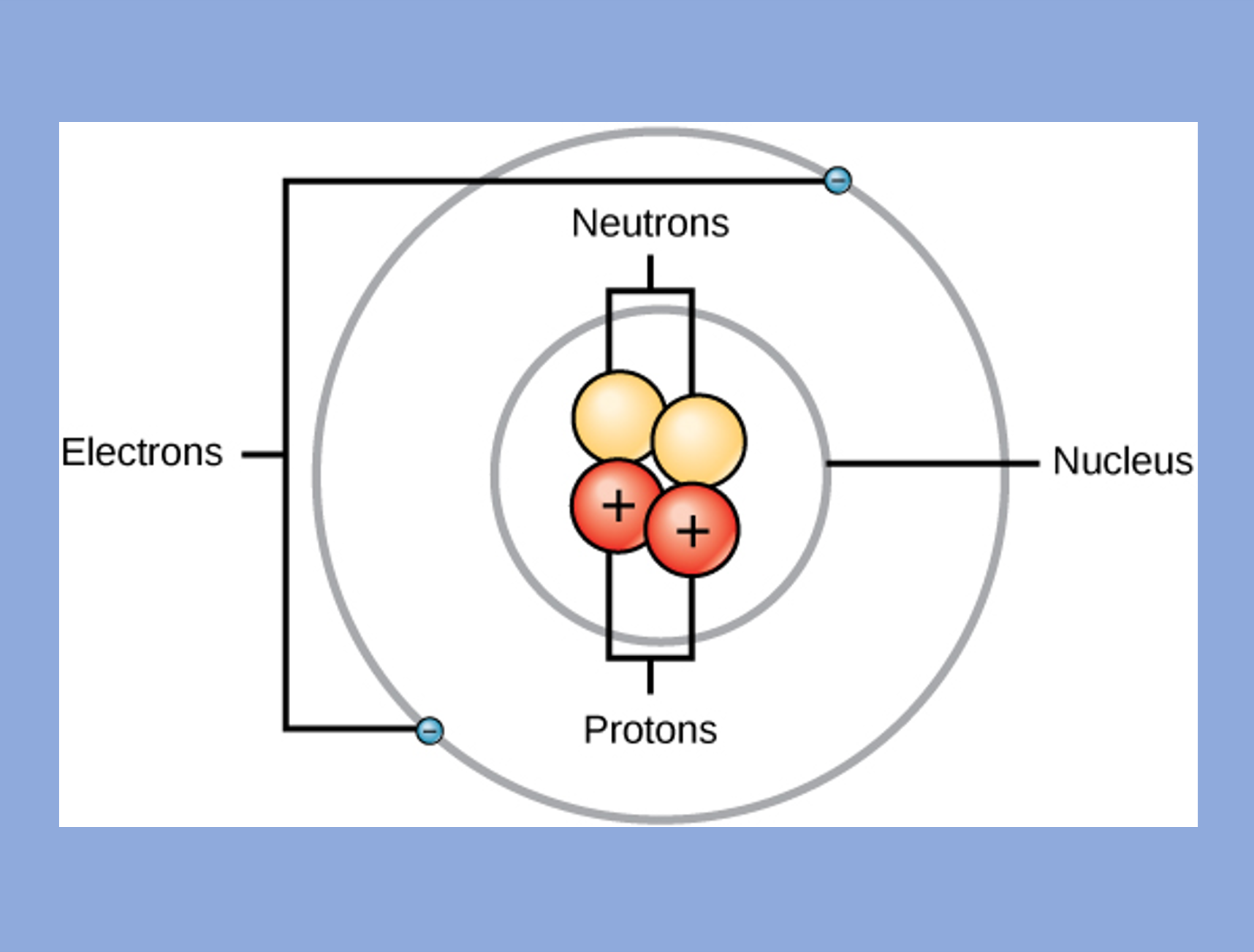
We need to study the cell's chemistry because the most minor, fundamental material components of the human body are chemical elements. These elements make up the organic and inorganic compounds needed by the body. It is also essential to understand what the changes in pH or the amounts of the necessary compounds can do to our bodies.
("Bohr Atom Structure" by Clark et al. is used with a CC BY 4.0 license.)Upon completion of this module, you will be able to:- Name the four most important elements in the body. (CLO #1, #3, and #4)
- Distinguish between inorganic and organic compounds and be able to give characteristics of each type. (CLO #1, #3, and #4)
- List the properties of water that contribute to its physiological functions. (CLO #1 and #3)
- Describe the pH scale and its relationship to acidic, basic, and neutral solutions. (CLO #1, #3 and #4)
- Describe the structural organization and major functions of carbohydrates, lipids, proteins, and nucleic acid and how they work in the body. (CLO #1, #3, and #4).
To achieve these objectives:
- Read the Module 2 Introduction. (MLO #1-5) (CLO # 1 and 3)
- Read Chapter 3 from the textbook. (MLO #1-5) (CLO #1 and 3)
- Test Your Knowledge sections are located at the end of each segment in the chapter. Answering the questions in these sections will aid in your knowledge to help you with the course. These questions will be relevant for information on testing and quizzes. (MLO #1-5)(CLO #1 and 3)
- Complete the exercises in the "Practice" section at the end of the chapter. (MLO # 1-5)(CLO 1-4)
- Complete the discussion activity. (MLO #3)(CLO 1-4)
- Complete the quiz. (MLO 1-5)(CLO 1-4)
Module Pressbooks Resources and Activities
You will find the following resources and activities in this module at the Pressbooks website. Click on the links below to access or complete each item.
-
The quiz will cover CLOs 1-4 and MLOs 1-5
This quiz will have 10 questions. It is worth 20 points. You are allowed 2 attempts at this quiz. Correct answers will be available for review after the quiz is closed.
Directions for Instructors: Load questions from the Module 2 Question Bank. Set close date and then tick "Right answer" box under "After the quiz is closed" section of Review Options.
-
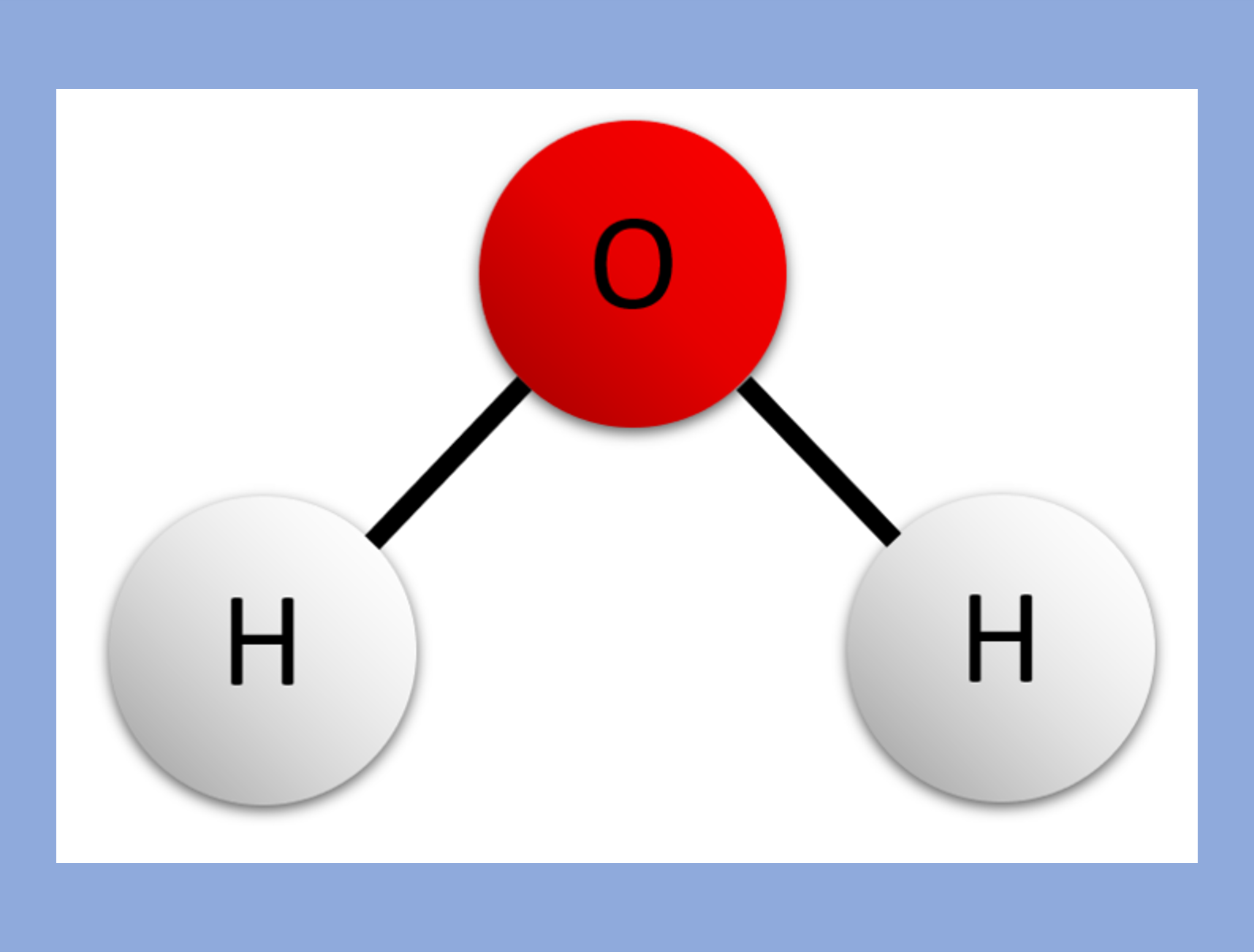
This module will discuss the various functions of water within the human body. Both our bodies and our environment are mostly water. Thus, recognizing our cells’ dependence on water to function and observing how crucial biological molecules interact with water is paramount to understanding how important this molecule is for maintaining homeostasis within our bodies. This module will explain the many functions of water in biological systems and demonstrate water distribution throughout our bodily fluids. By understanding the chemical makeup of water, you will be able to recognize where various biomolecules will be located within our bodies and predict how they will interact with water in both our intracellular and extracellular environments.
("Water Molecule Ball and Stick" by MsKDinh is used with a CC BY-SA 4.0 license.)
Upon completion of this module, you will be able to:- Summarize the role of water as a lubricant and explain how water functions as a natural cushion within our organ systems. (C.L.O. #1 and #3)
- Explain the significance of water as a natural heat sink, and describe how this unique property allows water to resist large temperature fluctuations within our bodies. (C.L.O. #1, #2, and #3)
- Relate the importance of water as the “universal solvent” within our bodies and evaluate the importance of this within the human body. (C.L.O. #1, #2, and #3)
- Describe the role that water plays during dehydration synthesis and hydrolysis reactions and relate this to both the synthesis and the degradation of biomolecules. (C.L.O. #1)
- Summarize the distribution of water within the human body and emphasize the significance of water as a component of both our intracellular and extracellular fluids. (C.L.O. #4)
To achieve these objectives:
- Read the Module 3 Introduction. (C.L.O.#1, #3, and #4)
- Read Chapter 4 in the textbook. (C.L.O. #1, #3, and #4)
- Test Your Knowledge sections are located at the end of each segment in the chapter. Answering the questions in these sections will aid in your knowledge to help you with the course. These questions will be relevant for information on testing and quizzes. (C.L.O. #1, #3, and #4)(M.L.O. #1, #2, #3, #4, #5)
- Complete the exercises in the "Practice" section at the end of the chapter. (C.L.O. #1, #3, and #4)(M.L.O. #2, #3, #4, #5)
- Complete the discussion activity. (C.L.O. #4)(M.L.O. #1, #2, #5)
- Complete the case study exercise. (C.L.O. #3 and #4) (M.L.O. # 5)
- Complete the quiz. (C.L.O. #1, #3, and #4)(M.L.O. #1, #2, #3, #4, #5)
Module Pressbooks Resources and Activities
You will find the following resources and activities in this module at the Pressbooks website. Click on the links below to access or complete each item.
-
This quiz will have 5 questions. It is worth 10 points. You are allowed 2 attempts at this quiz. Correct answers will be available for review after the quiz is closed.
Directions for Instructors: Load questions from the Module 3 Question Bank. Set close date and then tick "Right answer" box under "After the quiz is closed" section of Review Options.
-
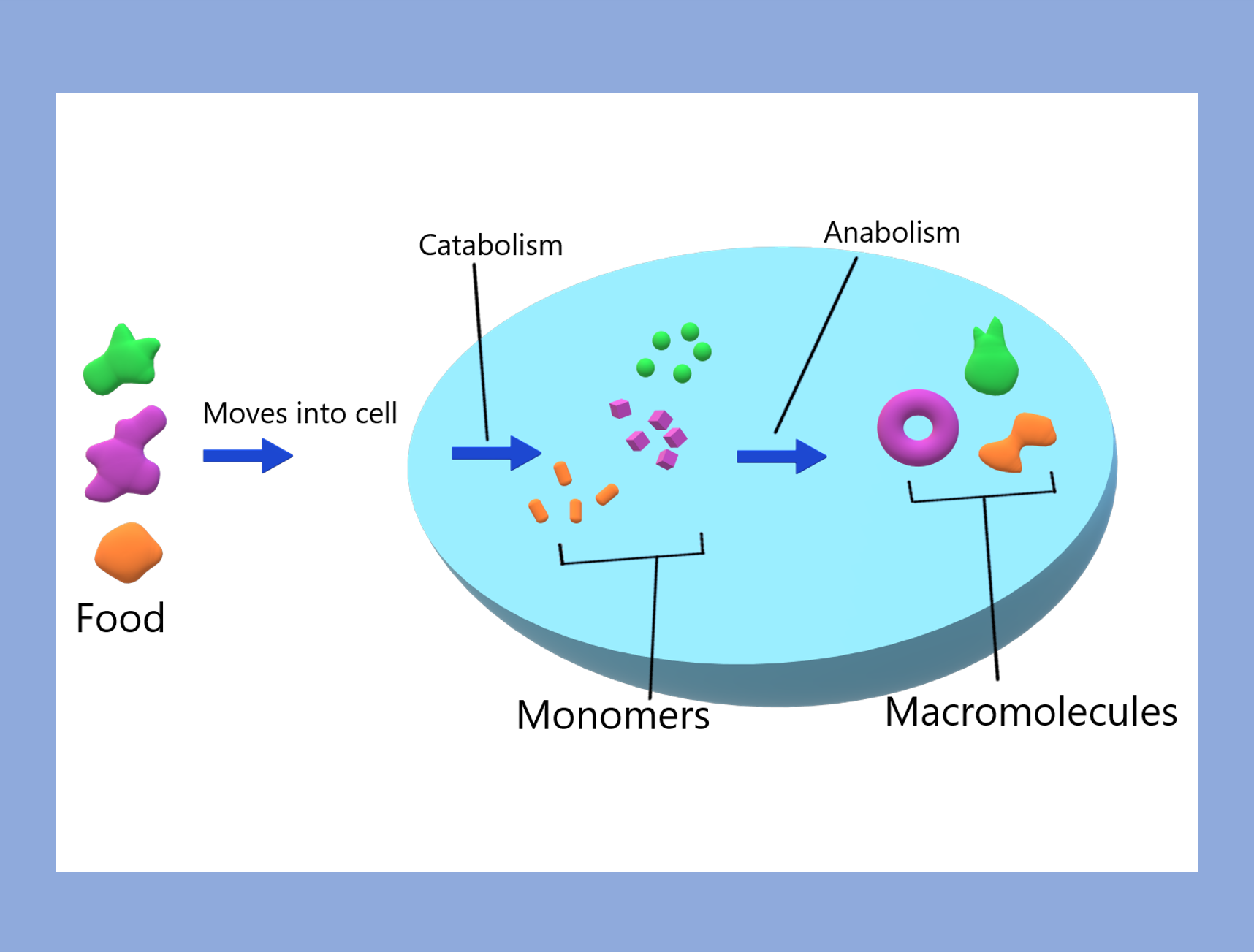
This module will describe the chemical behavior of carbon and its role in forming the four significant macromolecules that our bodies need. The reactions needed to form these molecules and break them down will also be illustrated. In addition, the individual properties of common functional groups will be explored concerning these carbon-based molecules. Finally, the roles of carbohydrates, proteins, lipids, and nucleic acids in our bodies and their importance in maintaining homeostasis will be evaluated.
("Anabolism and Catabolism" by Christinelmiller is used with a CC BY-SA 4.0 license.)
Upon completion of this module, you will be able to:- Describe the atomic
structure of carbon and relate how this structure allows for such versatility
in our bodies. (CLO #1)
- Explain how
macromolecules are made in the human body, and how they are broken down to be
used within our cells. (CLO #1)
- Relate the function of lipids and carbohydrates in our cells and explain how our bodies use them differently to store energy. (CLO #2 and #3)
- Describe proteins and emphasize the importance of the four levels of protein structure as they apply to protein function. (CLO #1 and #2)
- Describe the structure
of nucleic acids and summarize their role in information storage within the
human body. (CLO #4)
To achieve these objectives:
- Read the Module 4 Introduction. (C.L.O. #1, #3, and #4)
- Read Chapter 5 in the textbook. (C.L.O. #1, #3, and #4)
- Test Your Knowledge sections are located at the end of each segment in the chapter. Answering the questions in these sections will aid in your knowledge to help you with the course. These questions will be relevant for information on testing and quizzes. (C.L.O. #1, #3, and #4)(M.L.O. #1, #2, #3, #4, #5)
- Complete the exercises in the "Practice" section at the end of the chapter. (C.L.O. #1, #3, and #4)(M.L.O. #1, #2, #3, #4, #5)
- Complete the discussion activity. (C.L.O. #4)(M.L.O. #2, #3)
- Complete the case study exercise. (C.L.O. #4)(M.L.O. #4)
- Complete the quiz. (C.L.O. #1, #3, and #4)(M.L.O. #1, #2, #3, #4, #5)
Module Pressbooks Resources and Activities
You will find the following resources and activities in this module at the Pressbooks website. Click on the links below to access or complete each item.
- Describe the atomic
structure of carbon and relate how this structure allows for such versatility
in our bodies. (CLO #1)
-
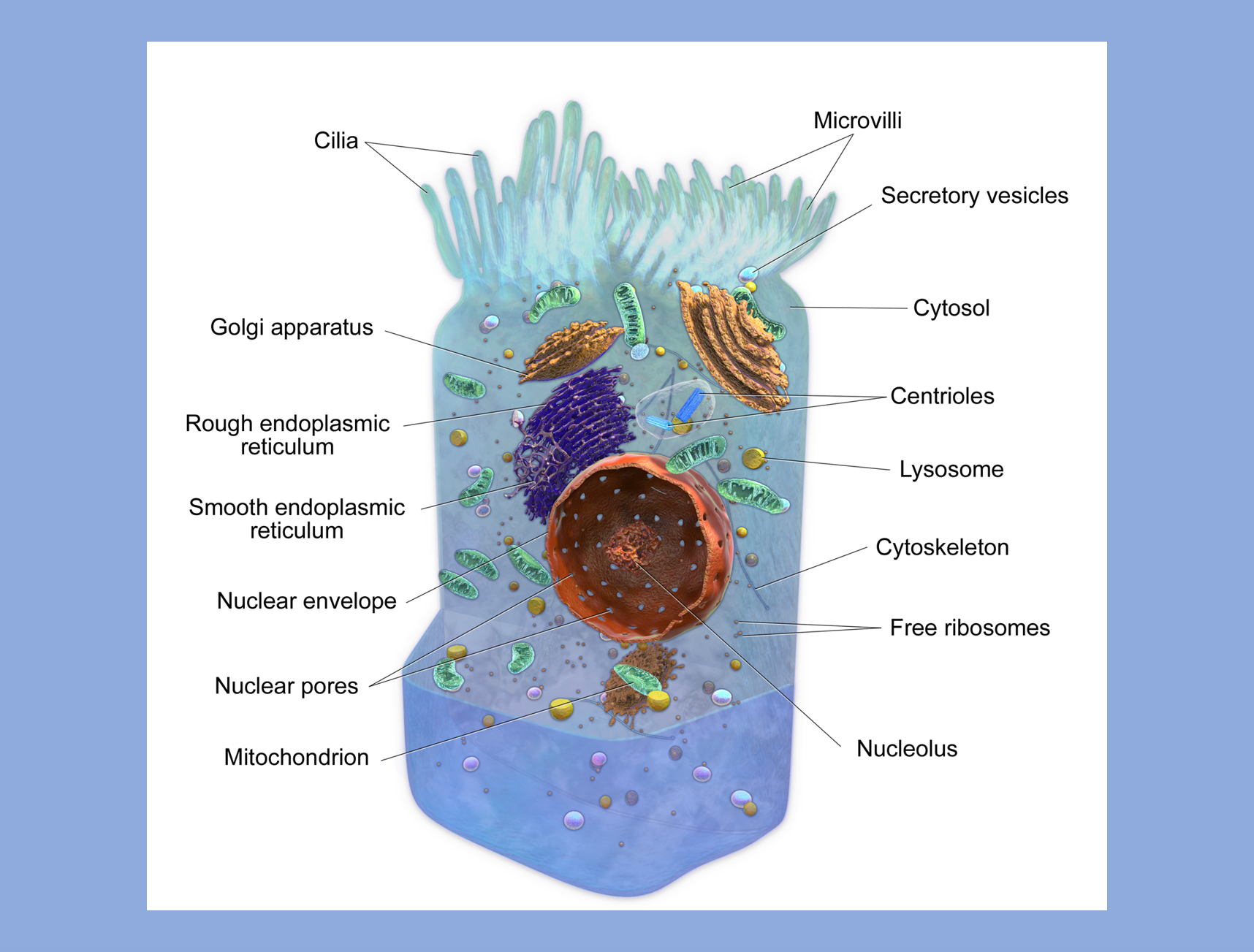
The purpose of this guide is to provide an overview of the basic structural components of living cells and their functions. Although our body is composed of chemicals, the smallest structural and functional unit of life begins with the cell. An average human body contains approximately 37.2 trillion (37,200,000,000,000) cells. The cells in the human body are active; they grow, specialize, and function, and most of them repair, reproduce, and die. There are 226 different kinds of cells in the human body. Most of our body cells have three main parts: the (plasma)cell membrane, which protects the integrity of the cell aside from other functions; the nucleus, which carries the hereditary material in the form of DNA; and the cytoplasm, gelatinous liquid with the suspended organelles that fills the area between the nucleus and the cell membrane. Each type of cytoplasmic organelle has a definite structure and a specific role in the function of the specific type of cell. Cytoplasmic organelles include mitochondria, ribosomes, endoplasmic reticulum, Golgi apparatus, vesicles, peroxisomes, and lysosomes. Understanding the structure of cells is one of the first steps in comprehending the complex cellular interactions that direct and produce life.
Upon completion of this module, you will be able to:- Specify the characteristics associated with life and explain why the cell is the basic unit of life. (C.L.O #2 and #3)
- Describe the levels of structural organization in the body. (C.L.O #2 and #3)
- Describe the structure and the functions of the major components of a cell. (C.L.O. #2, #3, and #4)
- Define metabolism and distinguish between anabolism and catabolism. (C.L.O. #1 and #3)
- Describe the cellular processes involved in the growth of the human body from a fertilized egg to an adult. (CLO #1 and #4)
- Explain the importance of cell differentiation to an organism. (C.L.O. #2 and #3)
- Describe the general characteristics of each of the following cell types and relate their characteristics to their functions: nerve cell, muscle cell, red blood cell (erythrocyte), and white blood cell (leukocyte). (C.L.O. #1, #3, and #4)
To achieve these objectives:
- Read the Module 5 Introduction. (C.L.O #1, C.L.O.#4)
- Read Chapter 6 in the textbook. (C.L.O #1, C.L.O. #4)
- Test Your Knowledge sections are located at the end of each segment in the chapter. Answering the questions in these sections will aid in your knowledge to help you with the course. These questions will be relevant for information on testing and quizzes. (C.L.O. #1, C.L.O. #2, C.L.O. #4)(M.L.O. #1, M.L.O. #2, M.L.O. #3, M.L.O. #4, M.L.O. #5, M.L.O. #6, M.L.O. #7)
- Complete the exercises in the "Practice" section at the end of the chapter. (C.L.O. #1, C.L.O. #2)(M.L.O. #1, M.L.O. #2, M.L.O. #3, M.L.O. #4, M.L.O. #5, M.L.O. #6, M.L.O. #7)
- Complete the discussion activity. (C.L.O #1 and #4), (M.L.O. #1)
- Complete the quiz.(C.L.O. #1, C.L.O. #2, C.L.O. #3, C.L.O. #4)(M.L.O. #1, M.L.O. #2, M.L.O. #3, M.L.O. #4, M.L.O. #5, M.L.O. #6, M.L.O. #7)
Module Pressbooks Resources and Activities
You will find the following resources and activities in this module at the Pressbooks website. Click on the links below to access or complete each item.
-
This quiz will have 10 questions. It is worth 20 points. You are allowed two attempts at this quiz. Correct answers will be available for review after the quiz is closed.
Directions for Instructors: Load questions from the Module 5 Question Bank.Set close date and then tick "Right answer" box under "After the quiz is closed" section of Review Options.
-
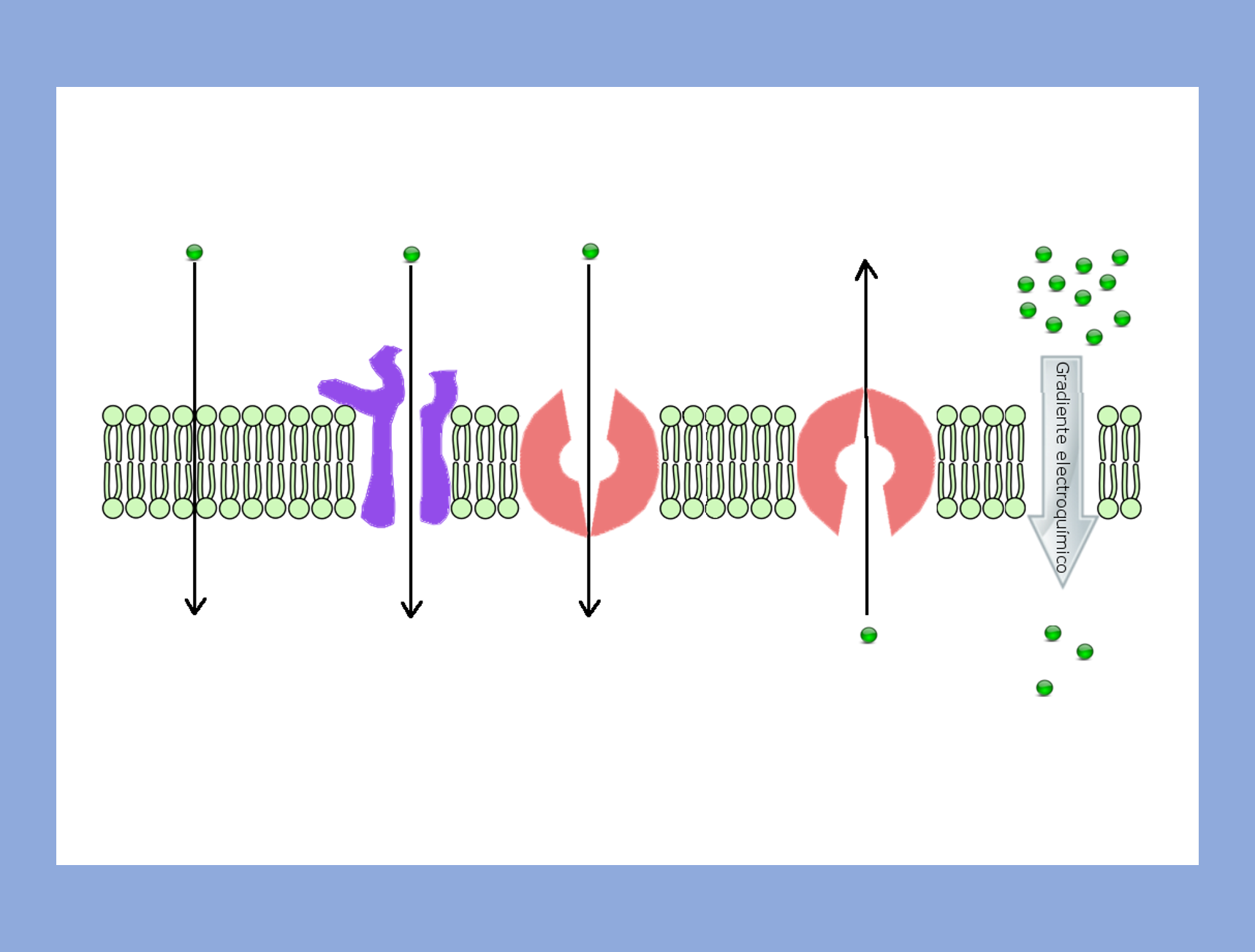
This module will describe both the structure and the function of the plasma membrane in our cells. This membrane serves as a selectively permeable barrier that separates the inside of our cells from the outside. The plasma membrane interacts with the aqueous environment on both sides of the membrane while keeping large quantities of water from rushing into our cells. In addition to this, our membrane closely regulates which substances are allowed to move into and out of our cells as we attempt to maintain homeostasis. This module will detail the numerous mechanisms our plasma membrane utilizes to accomplish this.
("MembraneTransport" by Alejandro Porto is used with a CC BY-SA 3.0 license.)
Upon completion of this module, you will be able to:- Describe the structure of the plasma membrane and explain how this structure contributes to the membrane’s function. (CLO #1 and #2)
- Compare and contrast active transport and passive transport and explain how each process is crucial for cellular function. (CLO #1 and #3)
- Provide examples of passive and active transport within the body and illustrate the importance of these processes. (CLO #3)
- Apply your knowledge of membrane transport to common medical conditions in which this process has been compromised. (CLO #3 and #4)
To achieve these objectives:
- Read the Module 6 Introduction. (C.L.O. #1, C.L.O. #3, and C.L.O. #4)
- Read Chapter 7 in the textbook. (C.L.O. #1, C.L.O. #3, and C.L.O. #4)
- Test Your Knowledge sections are located at the end of each segment in the chapter. Answering the questions in these sections will aid in your knowledge to help you with the course. These questions will be relevant for information on testing and quizzes. (C.L.O. #1, C.L.O. #3, and #4)(M.L.O. # 1, M.L.O #2, M.L.O. #3, M.L.O. #4)
- Complete the exercises in the "Practice" section at the end of the chapter. (C.L.O. #1, C.L.O. #3, and C.L.O. #4)(M.L.O. #1, M.L.O. #2, M.L.O. #3, M.L.O #4)
- Complete the discussion activity. (C.L.O. #3 and C.L.O. #4)(M.L.O. #1)
- Complete the case study exercise. (C.L.O. #4)(M.L.O. #2, M.L.O. #3, M.L.O. #4)
- Complete the quiz. (C.L.O. #1, C.L.O. #3, and C.L.O. #4)(M.L.O. #1, M.L.O. #2, M.L.O. #3, M.L.O. #4)
Module Pressbooks Resources and Activities
You will find the following resources and activities in this module at the Pressbooks website. Click on the links below to access or complete each item.
-
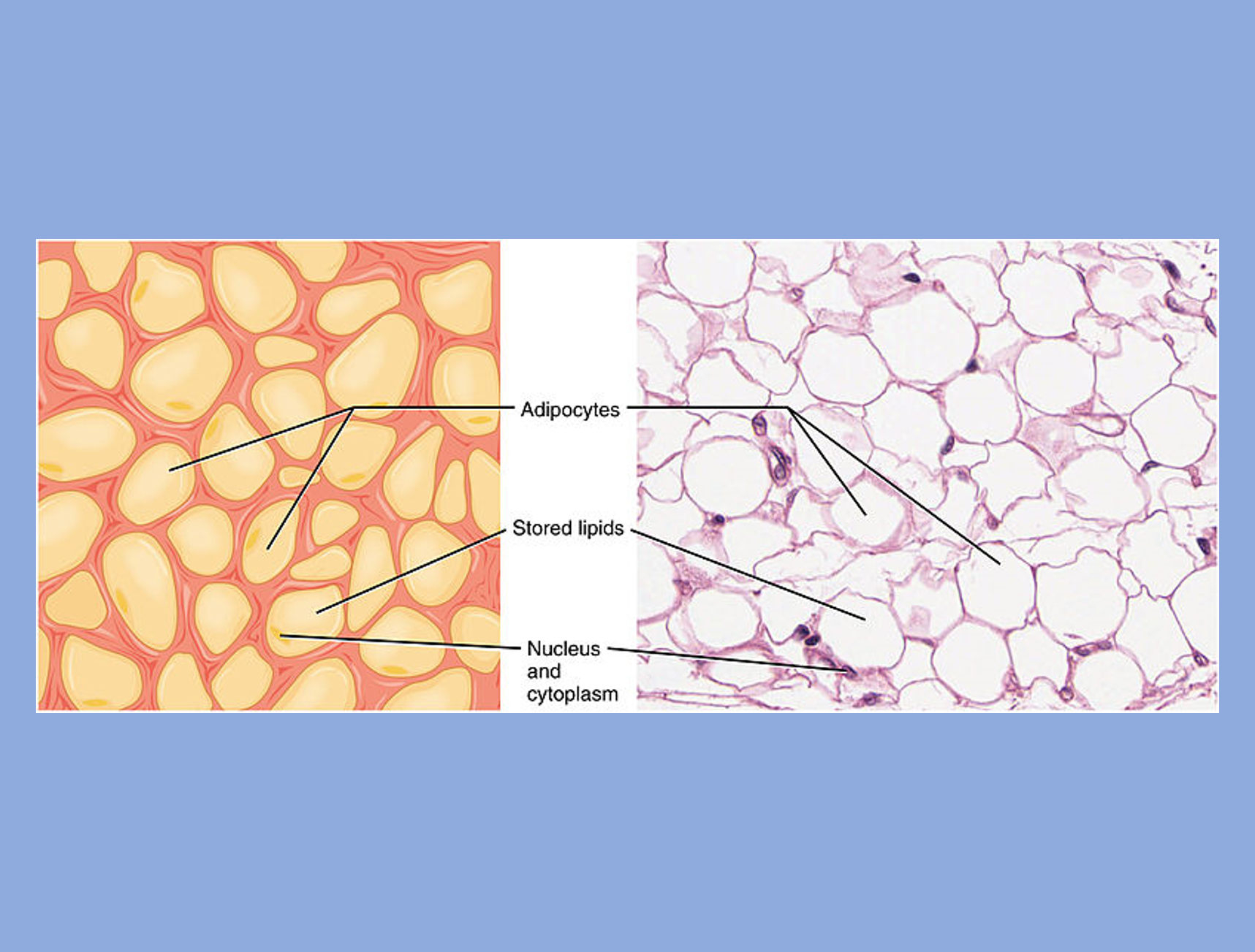
The smallest unit of life is called a cell. A group of cells with common embryonic origin, similar structure, and functions may exist as one unit known as a tissue. There are four main types of tissues: epithelial, connective, muscular(muscle), and nervous tissues. Epithelial tissues cover surfaces to protect and allow diffusion of ions and molecules and form the glands. The most abundant tissue type is the connective tissue, which underlies, binds, insulates, and supports other tissue types. Muscle tissue initiates movement by contracting and creating body heat. Nervous tissue transmits and integrates information. You will learn and make connections about their structures, functions, and locations in the human body.
The study of tissues under a microscope known as histology or microscopic anatomy. A common phrase “one must understand the normal to be able to recognize the abnormal” points out the importance of histology as a science and answers why microscopic anatomy is commonly used in medicine for diagnosis of certain diseases and analyzing the response to treatment.
Upon completion of this module, you will be able to:
- Define tissue and describe the importance of tissue level organization to an organism (C.L.O. #1).
- Describe the structure and function of epithelial, connective, muscle, and nervous tissue (C.L.O. #2).
- Identify the distinguishing characteristics of these tissues (C.L.O. #2 and #3).
- Give examples to most common locations of these tissues (C.L.O. #2 and #3).
- Explain the relationships between structure and function of tissues (C.L.O. #4)
To achieve these objectives:
- Read the Module 7 Introduction. (C.L.O #1 and #2),
(M.L.O. #1, #2)
- Read Chapter 8 in the textbook. (C.L.O #1 & #4), (M.L.O. #1 & #5)
- Test Your Knowledge sections are located at the end of each segment in the chapter. Answering the questions in these sections will aid in your knowledge to help you with the course. These questions will be relevant for information on testing and quizzes. (C.L.O #1 & #4), (M.L.O. #1 & #5)
- Complete the exercises in the "Practice" section at the end of the chapter. (C.L.O #1, 4), (M.L.O. #3)
- Complete the discussion activity. (C.L.O #4), (M.L.O. #5)
- Complete the case study exercise. (C.L.O #1, 4), (M.L.O. #3, 5)
- Complete the quiz. (C.L.O #1 & #4), (M.L.O. #1 & #5)
Module Pressbooks Resources and Activities
You will find the following resources and activities in this module at the Pressbooks website. Click on the links below to access or complete each item.
-
This quiz will have 5 questions. It is worth 10 points. You are allowed two attempts at this quiz. Correct answers will be available for review after the quiz is closed.
Directions for Instructors: Load questions from the Module 7 Question Bank.Set close date and then tick "Right answer" box under "After the quiz is closed" section of Review Options.
-
This exam will review the material covered in modules 1-7 of this course. There will be 50 questions and it is worth 100 points.
-
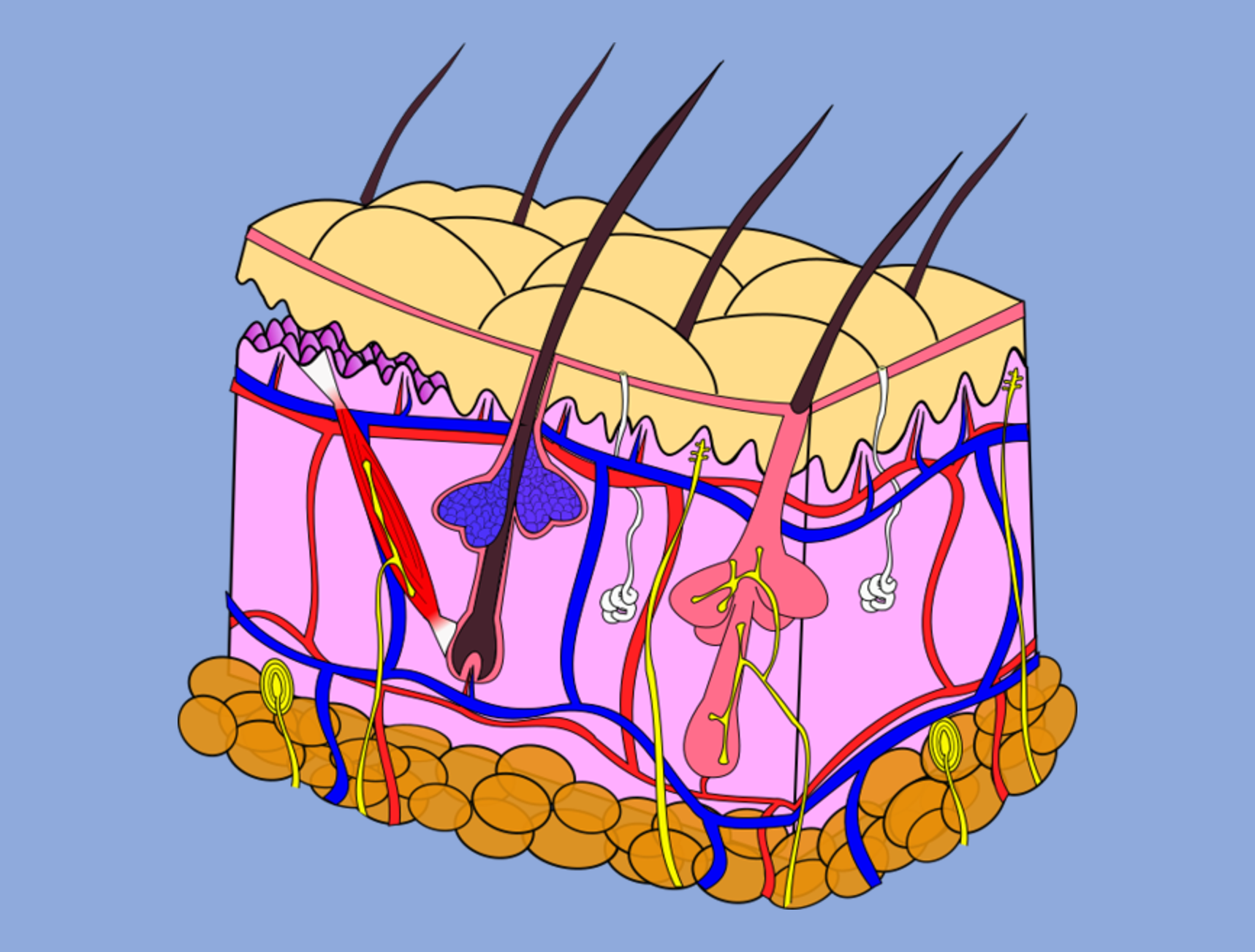
The integumentary system, featuring the largest organ in the human body–the skin, is the first complete organ system you study in this course. As the integument is the physical barrier that separates the body’s internal and external environments, the fundamental relationship between structure and function becomes evident as you relate the histology of the skin to physiological functions, such as maintaining homeostasis. The skin is conspicuous, and learning to distinguish skin abnormalities from natural color differences will introduce you to looking for variation across human anatomy. In medicine, the specialty that studies and treats the integument is called dermatology.
("Skin anatomy" by Sheldahl is used with a CC BY-SA 4.0. license.)
Upon completion of this module, you will be able to:- Identify the components of the integumentary system. (CLO #1)
- Describe the tissues and cells found in the epidermis and dermis layers of the integument. (CLO #1 and #2)
- Explain the varied appearance of skin color. (CLO #2, #3, and #4)
- Distinguish among the integumentary glands based on structure, location, and function. (CLO #2)
- Relate the anatomy of the integumentary system to maintaining homeostasis. (CLO #3 and #4)
- Name and describe the causes of common abnormal conditions of the integument. (CLO #2 and #4)
- Read the Module 8 Introduction. (CLO #1 and #4), (MLO # 1)
- Read chapter 9 in the textbook. (CLO #2, #3, and #4), (MLO #1, #2, #3, #4, #5, and #6)
- Test Your Knowledge sections are located at the end of each segment in the chapter. Answering the questions in these sections will aid in your knowledge to help you with the course. These questions will be relevant for information on testing and quizzes. (CLO #1, #2, #3, and #4), (MLO #1, #2, #3, #4, #5, and #6)
- Complete the exercises in the "Practice" section at the end of the chapter. (CLO #1, CLO #2, and CLO #3), (MLO #1, #2, #3, #4, #5, and #6)
- Complete the discussion activity. (CLO #1 and #2), (MLO #1 and #2)
- Complete the case study exercise. (CLO #1, #2, and #4), (MLO #1, #2, and #5)
- Complete the quiz. (CLO #1, #2, #3, and #4), (MLO #1, #2, #3, #4, #5, and #6)
Module Pressbooks Resources and Activities
You will find the following resources and activities in this module at the Pressbooks website. Click on the links below to access or complete each item.
-
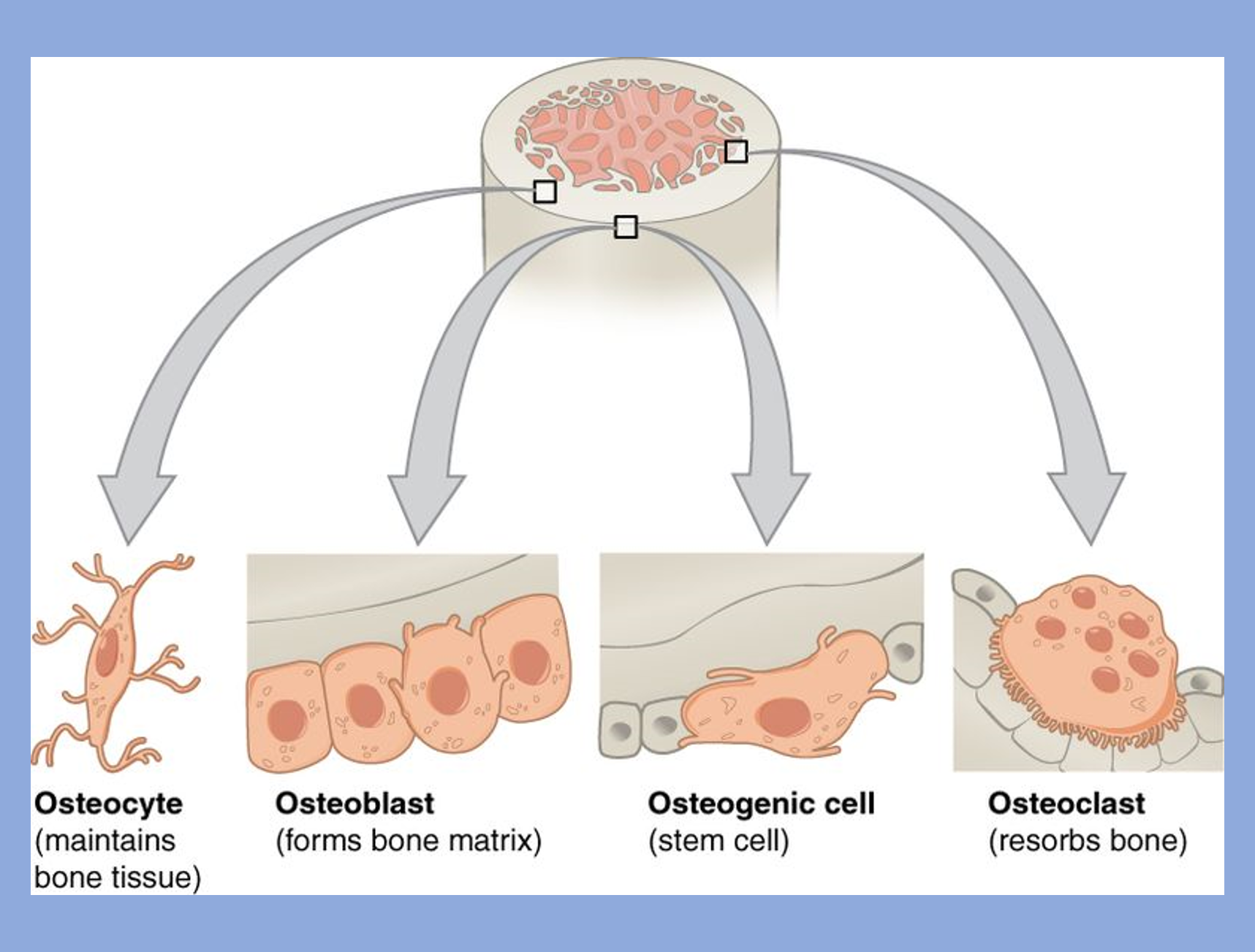
The skeletal system is the foundational system providing the framework of the body. It gives support and structure and is a central component for framing the human body. The skeletal system works in conjunction with other systems, such as the muscular system, to drive the movements in the body. Identifying anatomical locations of the skeletal system is a vital part of understanding human anatomy and physiology.
Upon completion of this module, you will be able to:
- Define the common terms related to the skeletal system to determine anatomical location. (CLO #1)
- Identify and describe anatomical structures and primary functions. (CLO #1 and #2)
- Recognize the difference in the appendicular skeleton and the axial skeleton. (CLO #3)
- Explain characteristics of bone classification,structure and function of the skull, vertebral column, thoracic cage, pectoral girdle, pelvic girdle, upper limb, and lower limb. (CLO #3 and #4)
To achieve these objectives:
- Read the Module 9 Introduction. (C.L.O. #1) (M.L.O. #1, # 3)
- Read Chapter 10 in the textbook. (C.L.O #1, #2, #3), (M.L.O. #1, # 4)
- Test Your Knowledge sections are located at the end of each segment in the chapter. Answering the questions in these sections will aid in your knowledge to help you with the course. These questions will be relevant for information on testing and quizzes. (C.L.O #2, #4) (M.L.O. #2, # 3)
- Complete the exercises in the "Practice" section at the end of the chapter. (C.L.O. #2, # 3) (M.L.O. #2, # 3)
- Complete the discussion activity. (C.L.O #1, #3) (M.L.O. #2, # 4)
- Complete the quiz. (C.L.O. #2, # 4) (M.L.O. #1, #2, # 4)
Module Pressbooks Resources and Activities
You will find the following resources and activities in this module at the Pressbooks website. Click on the links below to access or complete each item.
-
This quiz will have 10 questions. It is worth 20 points. You are allowed two attempts at this quiz. Correct answers will be available for review after the quiz is closed.
Directions for Instructors: Load questions from the Module 9 Question Bank.Set close date and then tick "Right answer" box under "After the quiz is closed" section of Review Options.
- Define the common terms related to the skeletal system to determine anatomical location. (CLO #1)
-
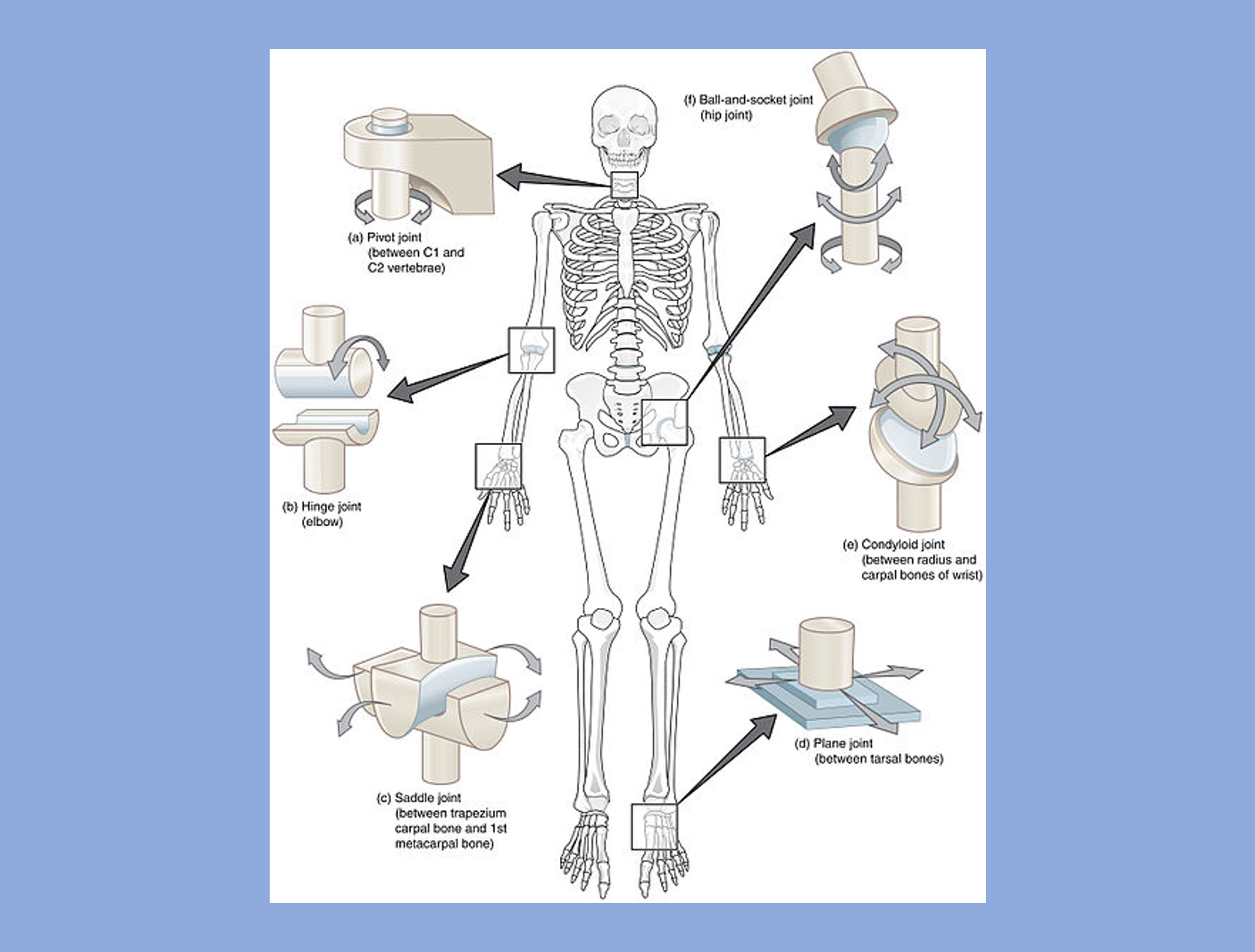
Joints and biomechanics are needed for most of the production of movement in the human body. Joints are the location where bones come together, and biomechanics focuses on how the body moves concerning the joined structures. Many joints allow for movement between the bones; at these joints, the articulating surfaces of the adjacent bones can move smoothly against each other. Biomechanics use the skeletal and muscular systems to provide excellent mobility. Most of the joints between the appendicular skeleton's bones are freely moveable. These joints allow the muscles of the body to pull on a bone, thereby producing movement of that body region.
("Types of Synovial Joints" by Betts et al. is used with a CC BY 4.0 license.)Upon completion of this module, you will be able to:
- Define the terminology: synarthrotic, diarthrotic, and amphiarthrotic as descriptions of the functional classes of joints. (CLO #1)
- Identify the structures, classifications, functions, and locations of the various types of joints in the human body.(CLO #2)
- Identify the structure of a synovial joint and describe the movements allowed by the synovial joint, and also specify an example of each in the human body. (CLO #1 and #4)
- Describe how muscles attach to bones to produce movement. (CLO #3)
- Define the following terms: lever, fulcrum, resistance, effort. (CLO #1)
- Explain the biomechanical principles and recognize the functioning of a lever system. (CLO #3 and #4)
To achieve these objectives:
- Read the Module 10 Introduction. (C.L.O #1), (M.L.O. #1)
- Read Chapters 11 and 12 in the textbook. (C.L.O #1, #2, #4), (M.L.O. #1, #2, #3, # 5)
- Test Your Knowledge sections are located at the end of each segment in the chapter. Answering the questions in these sections will aid in your knowledge to help you with the course. These questions will be relevant for information on testing and quizzes. (C.L.O #2, #4) (M.L.O. #2, # 3, #5)
- Complete the exercises in the "Practice" section at the end of the chapter. (C.L.O. #2, # 3) (M.L.O. #2, # 3)
- Complete the discussion activity. (C.L.O #1, #3) (M.L.O. #2, # 4, # 6)
- Complete the quiz. (C.L.O. #2, # 4) (M.L.O. #1, #2, # 4)
Module Pressbooks Resources and Activities
You will find the following resources and activities in this module at the Pressbooks website. Click on the links below to access or complete each item.
-
This quiz will have 10 questions. It is worth 20 points. You are allowed two attempts at this quiz. Correct answers will be available for review after the quiz is closed.
Directions for Instructors: Load questions from the Module 10 Question Bank.Set close date and then tick "Right answer" box under "After the quiz is closed" section of Review Options.
- Define the terminology: synarthrotic, diarthrotic, and amphiarthrotic as descriptions of the functional classes of joints. (CLO #1)
-
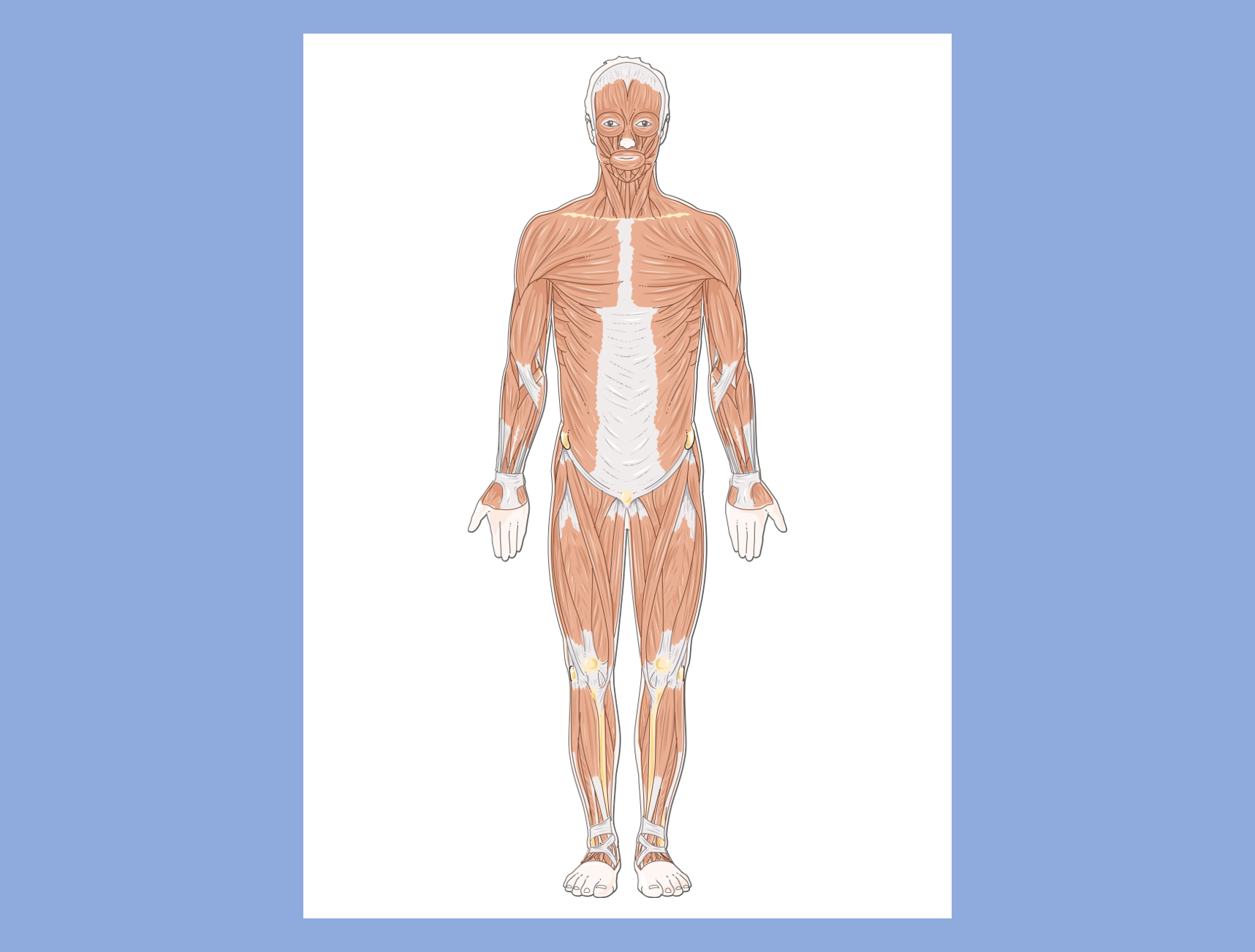
All muscles fundamentally perform one action: contraction. The consequence of this action may appear in many ways: (1) as gross movements, such as pulling a part of the skeleton in a specific direction; (2) the rhythmic pumping of blood by the heart; or (3) even more minor scale changes to the diameter of tubes, such as the blood vessels, gut, and bronchioles. This module highlights the many types of muscles in the human body, emphasizing skeletal muscle by understanding which muscles move what in the body; a weightlifter can learn to isolate these muscles and train them to grow by performing specific exercises. Moreover, physical therapists and athletic trainers use extensive knowledge of muscles and body movements to develop therapies to help persons heal from injuries.
("Servier - Drawing Superficial muscles anterior view - no labels" by Servier Medical Art is used with a CC BY 4.0 license.)
Upon completion of this module, you will be able to:
- Compare and contrast the three kinds of muscular tissue. (CLO# 1, 2)
- Describe the gross anatomy of the connective tissue layers surrounding skeletal muscle. (CLO# 1)
- Distinguish between the components of the muscle fiber and its fundamental functional unit, the sarcomere. (CLO# 1, 2)
- Relate muscle actions to maintaining homeostasis. (CLO# 3, 4)
- Define the main movements from skeletal muscle actions. (CLO # 1, 4)
- Explain naming conventions used to name muscles. (CLO #1 ,4)
- Identify the major skeletal muscles by regional groups in the body.(CLO# 1, 4)
To achieve these objectives:
- Read the Module 11 Introduction. (CLO #2), (MLO #4)
- Read Chapter 13 in the textbook. (CLO #1, #2, #3, and #4), (MLO #1, #2, #3, and #4)
- Test Your Knowledge sections are located at the end of each segment in the chapter. Answering the questions in these sections will aid in your knowledge to help you with the course. These questions will be relevant for information on testing and quizzes. (CLO #1, #2, #3, and #4), (MLO #1, #2, #3, and #4)
- Complete the exercises in the "Practice" section at the end of the chapter. (CLO #1 and #2), (MLO #1, #2, #3, #5, and #6)
- Complete the discussion activity. (CLO #1 and #2), (MLO #7)
- Complete the case study exercise. (CLO #1, #2, and #4), (MLO #2, #5, and #7)
- Complete the quiz. (CLO #1, #2, #3, and #4), (MLO #1, #2, #3, #4, #5, #6, and #7)
Module Pressbooks Resources and Activities
You will find the following resources and activities in this module at the Pressbooks website. Click on the links below to access or complete each item.
-
This quiz will have 5 questions. It is worth 10 points. You are allowed two attempts at this quiz. Correct answers will be available for review after the quiz is closed.
Directions for Instructors: Load questions from the Module 11 Question Bank.Set close date and then tick "Right answer" box under "After the quiz is closed" section of Review Options.
- Compare and contrast the three kinds of muscular tissue. (CLO# 1, 2)
-
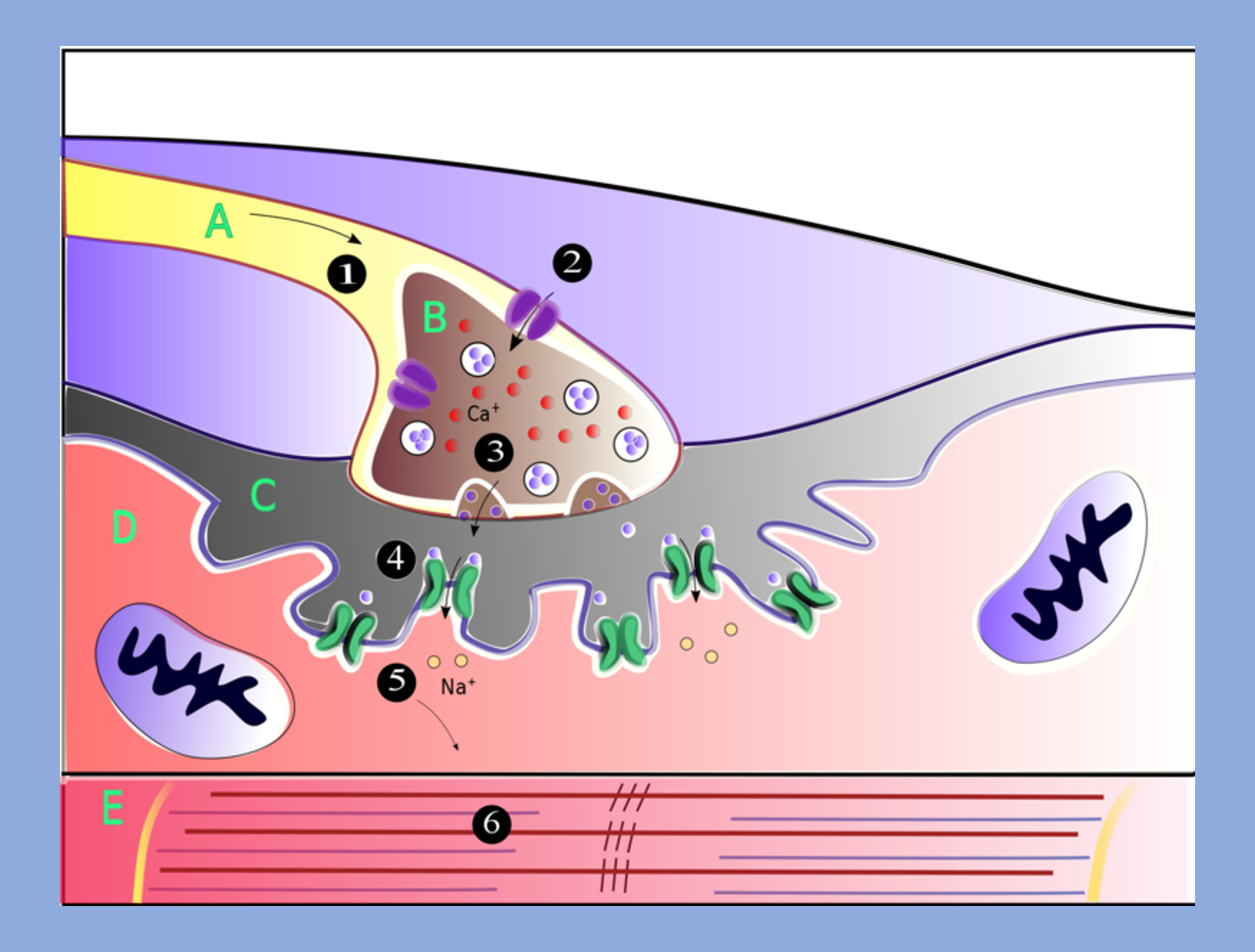
This module focuses on the physiology of how muscles work–starting with the initiation of the contraction, progressing to the contraction itself, and ending with the cessation of contraction or relaxation. Skeletal muscles can be used selectively in response to a demand, such as locomotion or moving a load. Factors like training and aging can change the appearance and performance of skeletal muscle. On the other hand, the cardiac muscle is always working and involves the coordination of different regions of the heart. Finally, smooth muscle often works behind the scenes at the tissue level to perform many essential functions, such as peristalsis. Understanding how all muscle types of work is necessary for many fields, including sports training, cardiopulmonary, gastrointestinal, and urogenital medicine.
("The Muscle Contraction Process" by Elliejellybelly13 is used with a CC BY-SA 4.0 license.)
Upon completion of this module, you will be able to:
- Describe the neuromuscular junction and relate it to excitation-coupling underlying contraction and relaxation of skeletal muscle. (CLO#s 1, 2, and 3)
- Explain how training and cessation of training affect skeletal muscle activity, including appearance, fatigue, and force. (CLO#s 1, 2, and 4)
- Define a motor unit and relate it to the concept of recruitment for enhancing skeletal muscle performance. (CLO#s 1, 2, and 4)
- Relate the structural organization of cardiac muscle to special aspects of cardiac muscle contraction, including coordination and self-activation. (CLO#s 1, 2, and 3)
- Describe the structure of smooth muscle and explain what factors cause contraction. (CLO #s 1, 2, and 3)
To achieve these objectives:
- Read the Module 12 Introduction. (CLO #2), (MLO #1, #4, and #5).
- Read Chapter 14 in the textbook. (CLO #1, #2, #3, and #4), (MLO #1, #2, #3, #4, and #5)
- Test Your Knowledge sections are located at the end of each segment in both chapters. Answering the questions in these sections will aid in your knowledge to help you with the course. These questions will be relevant for information on testing and quizzes. (CLO #1, #2, #3, and #4), (MLO #1, #2, #3, #4, and #5)
- Complete the exercises in the "Practice" sections at the end of each chapter. (CLO #1, #2, and #3), (MLO #1, #2, #3, #4, and #5)
- Complete the discussion activity. (CLO #1, #2, and #4), (MLO #2)
- Complete the case study exercise. (CLO #1, #2, and #4), (MLO #2)
- Complete the quiz. (CLO #1, #2, #3), (MLO #1, #2, #3, #4, and #5)
Module Pressbooks Resources and Activities
You will find the following resources and activities in this module at the Pressbooks website. Click on the links below to access or complete each item.
-
This quiz will have 5 questions. It is worth 10 points. You are allowed two attempts at this quiz. Correct answers will be available for review after the quiz is closed.
Directions for Instructors: Load questions from the Module 12 Question Bank.Set close date and then tick "Right answer" box under "After the quiz is closed" section of Review Options.
- Describe the neuromuscular junction and relate it to excitation-coupling underlying contraction and relaxation of skeletal muscle. (CLO#s 1, 2, and 3)
-
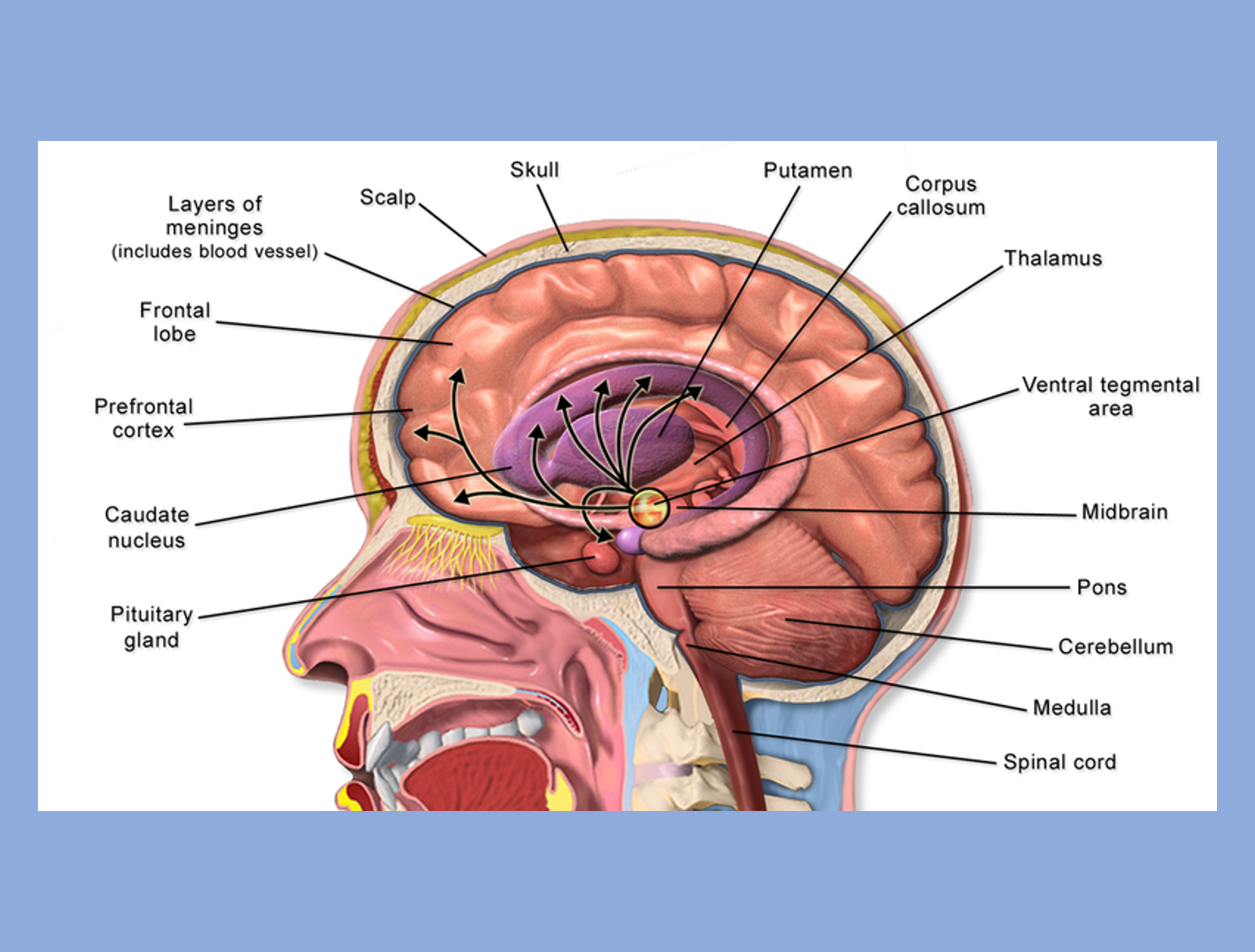
Note: You will have 2 weeks to complete this module.
The nervous system is studied because the nervous system produces thoughts, emotions, and behaviors, as well as controlling body functions. Studying the nervous system helps us shed light on what happens when disorders or diseases occur. Neurotransmitters are studied, and you will learn how they affect the body. The Central Nervous System, which consists of the brain and spinal cord, and the Peripheral Nervous System, which consists of all nerves outside the brain and spinal cord, will be studied.
("Brain Anatomy Striatum" by Bruce Blaus is used with a CC BY-SA 4.0 license.)
Upon completion of this module, you will be able to:
- List the divisions of the nervous system and describe the characteristics. (CLO #1 and #2)
- Describe the structure of neurons and neuroglia and the functions of their composition. (CLO #1 and #2)
- Identify the source and functions of neurotransmitters. (CLO #1)
- Identify the functions and components of the cerebrum (including lobes, fissures, sulci, cerebral cortex, and cerebral medulla), the cerebellum, the brain stem, meninges, and the limbic system.
To achieve these objectives:
- Read the Module 13 Introduction. (MLO #1-4)(CLO #1)
- Read Chapter 15 in the textbook. (MLO 1-4)(CLO #1-4)
- Test Your Knowledge sections are located at the end of each segment in the chapter. Answering the questions in these sections will aid in your knowledge to help you with the course. These questions will be relevant for information on testing and quizzes. (MLO #1-4)(CLO #1-4)
- Complete the exercises in the "Practice" section at the end of the chapter. (MLO 1-4)(CLO# 1-4)
- Complete the discussion activity. (MLO #1 and 4) (CLO #1-4)
- Complete the case study exercise. (MLO # 1 and 4) (CLO #1-4)
- Complete the quiz. (MLO #1-4)(CLO # 1-4)
Module Pressbooks Resources and Activities
You will find the following resources and activities in this module at the Pressbooks website. Click on the links below to access or complete each item.
-
This quiz will have 10 questions. It is worth 20 points. You are allowed two attempts at this quiz. Correct answers will be available for review after the quiz is closed.
Directions for Instructors: Load questions from the Module 13 Question Bank.Set close date and then tick "Right answer" box under "After the quiz is closed" section of Review Options.
- List the divisions of the nervous system and describe the characteristics. (CLO #1 and #2)
-
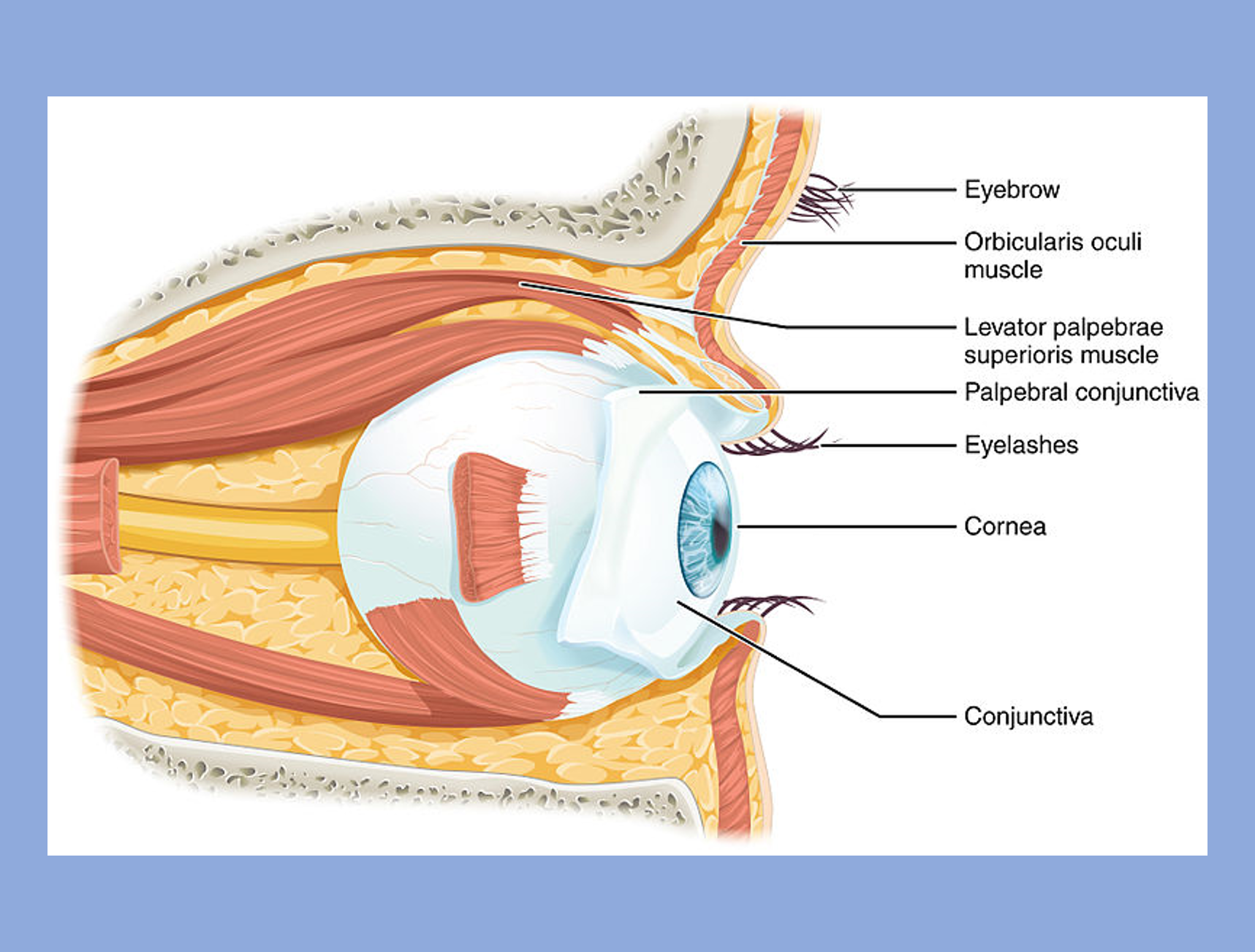
Our nervous system must receive and process information to stay healthy and be safe. The sensory receptors receive the various types of stimuli and change into electrochemical signals, which are then carried into the CNS by neurons to inform us about the changes within the environment around us or the state of our internal environment.
The senses can be classified as either general or specific. A general sense is distributed throughout the body and has receptor cells within the structures of other organs. Mechanoreceptors in the skin, muscles, or the walls of blood vessels are examples of this type. General senses often contribute to the sense of touch, as described above, or to proprioception (body awareness) and kinesthesia (body movement), or to a visceral sense, which is most important to autonomic functions. A unique sense has a specific organ devoted to it: the eye(vision/sight), inner ear (hearing and balance/equilibrium), tongue(gustation/taste), or nose(olfaction/smell).
You would have an overview of information on general senses and look at the five different special senses, their functions, and associated organs.
("Eye in the Orbit" by Betts et al. is used with a CC BY 4.0 license.)
Upon completion of this module, you will be able to:- Describe the general and special senses and appropriate terminology related to senses (CLO #1 and #3)
- Describe the structure and function of the olfactory system (CLO #2, #3, and #4)
- Recognize the structure and functions of the external, middle, and inner ear (CLO #2, #3, and 4#).
- Explain the physiology of hearing, static and dynamic balance (CLO #2, #3, and #4).
- Identify the location and explain the function of each of the main components of the human eye (CLO #2, #3, and #4).
To achieve these objectives:
- Read the Module 14 Introduction. (CLO #1), (M.L.O. #1)
- Read Chapter 16 in the textbook. (C.L.O #1 & #4), (M.L.O. #1 & #5)
- Test Your Knowledge sections are located at the end of each segment in the chapter. Answering the questions in these sections will aid in your knowledge to help you with the course. These questions will be relevant for information on testing and quizzes (CLO#1,2 and 3), (MLO#1,3,4,5).
- Complete the exercises in the "Practice" section at the end of the chapter (CLO#1,2 and 3), (MLO#1,3,4,5).
- Complete the discussion activity (CLO#1 and 4), (MLO#2)
- Complete the quiz. (CLO#1,2 and 3), (MLO#1,3,4,5)
Module Pressbooks Resources and Activities
You will find the following resources and activities in this module at the Pressbooks website. Click on the links below to access or complete each item.
-
In the quiz below, prompts assess course learning outcomes #s 1-4 and module learning outcomes #s 1-5.
This quiz will have 10 questions. It is worth 20 points. You are allowed two attempts at this quiz. Correct answers will be available for review after the quiz is closed.
Directions for Instructors: Load questions from the Module 14 Question Bank.Set close date and then tick "Right answer" box under "After the quiz is closed" section of Review Options.
-
This exam will review the material covered in modules 8-14 of this course. There will be 50 questions and it is worth 100 points.
-
This module contains your final exam. It is a comprehensive exam consisting of all of the material covered in this course. The exam is composed of 50 questions exam. Read the instructions carefully and take note of any special submission guidelines.
To complete your final exam:
- Read and view the final assessment instructions
- Scheduled your exam with the proctoring service [if applicable].
- Prepared and submitted your final assessment
